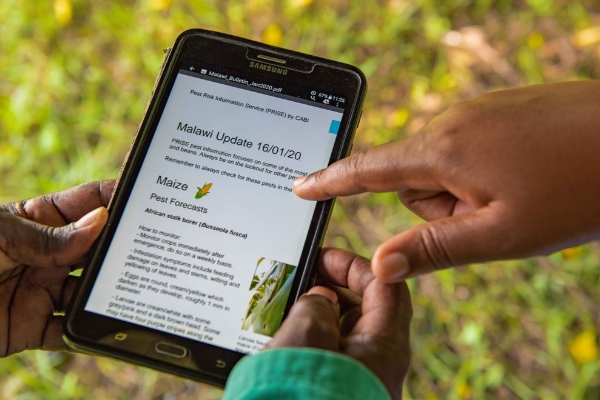A mobile phone message alert system developed by the Centre for Agriculture and Bioscience International development charity (CABI) in 2017 is helping stallholder farmers from Kenya, Ghana, Malawi, and Zambia cut crop loss and boost incomes thanks to early SMS warnings on pest risks.
The alert system called Pest Risk Information Service (PRISE) which uses earth observation data allows the farmers to prepare for pest threats in advance thus increasing the efficiency and efficacy of interventions as opposed to farmers who did not use it.
As a result, it diminishes the need for reactive measures, which are both time-consuming and costly, often yielding ineffective results.
In a report released by the National Institutes of Health in 2023, it was revealed that Africa loses fifty percent of its annual harvest to pests. The economic repercussions attributed solely to invasive alien pests on Africa’s agricultural sector are estimated to be around $65.58 billion annually.
In 2021, a survey conducted among 2,000 smallholder maize farmers in Kenya revealed that those who received pest alerts for fall armyworm (Spodoptera frugiperda) achieved a harvest of 2,089 kg/ha, earning Sh18,020/ha.
In contrast, smallholder farmers who did not receive these alerts only attained a harvest of 1,988 kg/ha, resulting in a lower income of Sh15,733/ha.
How the system works
The PRISE program operates by collecting data from various sources, including satellite observations, weather data, geographic information, and details regarding the seasonal occurrence, abundance, and biology of pests.
This data is then integrated into a ‘data cube’ to execute algorithms, ultimately generating information on the optimal timing for pest management actions.
This information is utilized to provide farmers with timely alerts and advice to effectively handle local pest outbreaks as part of their Integrated Pest Management (IPM) strategies.
PRISE alerts leverage the widespread use of mobile phones, as 98% of African farmers own one, to grant farmers access to vital information aimed at enhancing crop health, including methods for managing crop pests.
The program collaborates with government agencies across Africa, including the Kenyan Agricultural and Livestock Research Organization (KALRO); the Plant Protection and Regulatory Services Directorate (PPRSD) and Crop Research Institute (CRI) in Ghana; the Department of Agriculture Extension Services in Malawi; and the Zambia Agricultural Research Institute (ZARI).
Predicting the optimal action time
Employing downscaled and analyzed Earth Observation data to inform the models, PRISE collaborated with African national agencies to disseminate pre- and in-season pest alerts that predict the optimal time for action against key insect pests.
These alerts were tailored to align with country-specific Good Agricultural Practice (GAP) recommendations, offering a complementary resource to agricultural stakeholders.
For instance, by translating time-to-act data into maps integrated with PlantwisePlus GAP information, bulletins (PDF documents) were produced twice a month, amalgamating PRISE action alerts with pertinent diagnostic and management advice from Pest Management Decision Guides.









